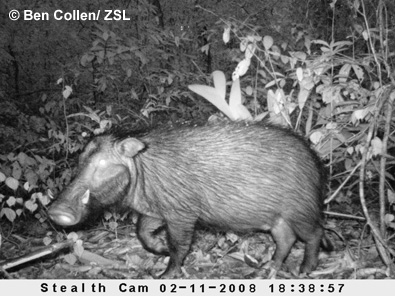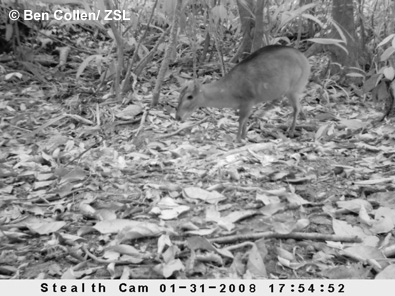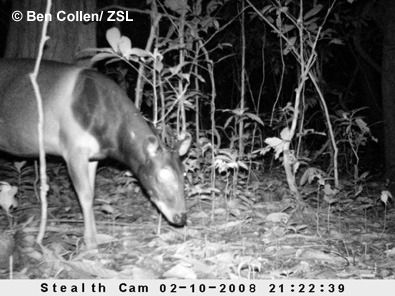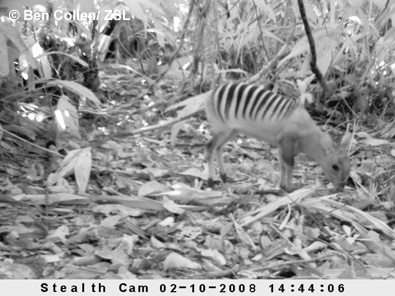Sapo National park comprises 1800 km2 of moist tropical lowland rainforest, with a varied mosaic of riparian, seasonally inundated, and dryland forest. There is a rich diversity of animals of the park, and using camera traps gives us the advantage of being able to capture information on many species in addition to the pygmy hippo – the focus of our work here. Here are some of the many other species that were caught on camera over the first weeks of the survey. These data provide the basis for repeated surveys in Sapo, providing a range of information to complement the work we are doing on pygmy hippos.
Giant forest hog (Hylochoerus meinertzhageni ) is the largest member of the pig family. Full grown adult males can reach up to 2m in length, weighing up to 500kg.
Sapo contains many different species of duiker, of which we have photographs of most now. This is a bay duiker, (Cephalophus dorsalis). These species in particular remain a target of hunters in and around the park.
Jentink’s duiker (Cephalophus jentinki) is listed on the IUCN Red List as Vulnerable. The largest of the duikers, this species is endemic to western Africa and is found in restricted areas of Liberia, Sierra Leone and Côte d’Ivoire.
The cameras are sensitive enough to capture pictures of some small and elusive species, such as these slender mongoose (Galerella sanguinea). These are a very adaptable species, and range over much of sub-Saharan Africa.
Without a doubt my favourite picture, the Zebra duiker (Cephalophus zebra). They are really striking, but very difficult to see. Unfortunately, also listed as Vulnerable on the Red List. This picture was a real hit with the park rangers. There is a real affinity for this species around Sapo.
We’ll update you with more pictures as they come in from John…




